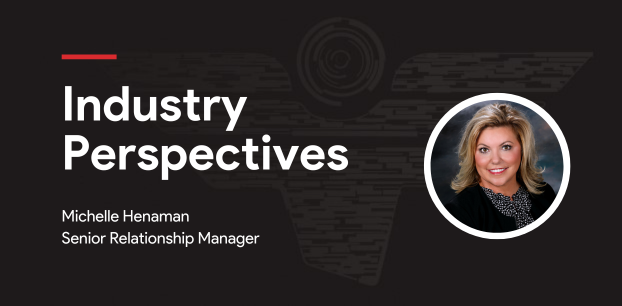
Wellness: Seeing the Forest Through the Trees
Employee Wellness. Over the course of several years, it’s been considered everything from a buzzword to a magic bullet in the area of Human Capital. No doubt, it’s a necessary element for a positive workplace culture. It is also, for some, a proven employee retention and recruitment tool. The companies available to provide such programs are plentiful and more than willing to sell their version of the perfect wellness program at a significant cost.
But, sometimes, it’s hard to see the forest through the trees. Have you considered that it may be highly unnecessary to install a separate “wellness” program? What if you were able to leverage a basic and foundational element of your employee benefits package – your health plan – with holistic wellbeing outcomes? Have you considered that if designed with intention, your health plan itself can harvest the elements necessary to provide your employees with holistic wellness? What if your health plan itself isn’t providing the opportunities to give your employees the holistic wellness they deserve? Instead, the worry of high deductibles, limited benefits, and year-over-year cost shifting to the employee is what is causing the need to have a wellness program. What if you could redeploy your health plan with the intent to increase your employees’ wellbeing?
A recent MetLife Employee Benefits Trend Study suggests corporate wellness doesn’t have to be a program bought from a third party – with soft ROI’s and added administrative expense. It starts with building a corporate culture where people feel appreciated and taken care of by providing a health plan that allows employees to effectively take care of their family’s health. Employees need a plan that assists with navigating the always changing, extremely complicated world of healthcare, while also removing high premiums, and increasing deductibles and out-of-pocket costs. A few takeaways from the survey:
Overall, job satisfaction is down when compared to pre-pandemic levels. This is despite a shortage of workers and increased wages. This raises questions about the factors contributing to this decline, such as employee benefits, meaningfulness of work, overall financial health of the employees, etc. It suggests that simply addressing wage levels may not be enough to ensure high job satisfaction, and employers need to focus on creating a positive work environment and meaningful opportunities for their employees.
Employers overestimate employee well-being. The dissatisfaction may stem from various factors, including pay, benefits, company culture, opportunities for growth, and motivation. What is causing this disconnect between corporate leadership and the employees on the ground, especially in a time of increased job demand? Are employees contemplating their job/company satisfaction because they see the increased spend on wellness programs instead of lowering their out-of-pocket cost?
Employee Health is in decline. There’s a sharp decline in financial health, but that’s accompanied by mental and physical wellbeing as well. According to the study, employees who perceive themselves as financially healthy are significantly more likely to feel cared for by their employer. Employees who experience holistic health and feel supported by their employer are not only more productive but also more loyal. The challenge is how employers can address employee financial health when they are already paying significantly higher wages to attract and retain talent.
More than half of employees are living check to check. Wages are up, but so is inflation. People aren’t getting as far with their bigger paychecks. 55% of participants polled are living paycheck to paycheck. If financial health is tied to mental and physical health, then it’s easy to see how people are generally dissatisfied with work and less healthy as a result.
79% of employees polled list health insurance as a must-have benefit.
This is no surprise. ‘Good’ Health insurance is often the primary driver for going to work or staying at a particular employer. But what is good insurance? Is it low out-of-pockets? A large network of providers? Lower EE contributions?
Implementing a health plan with lower out-of-pocket costs and reduced employee contributions is an effective way to enhance company culture. The immediate relief employees get has a positive ripple effect throughout the organization. While programs like ours have historically been viewed as budget options for those unable to afford big-name brands, the evolving landscape positions us as the gold standard for employers seeking a fair deal and a quality benefit for their workforce. We’ve consistently witnessed that when an employee has a choice between our program at a reasonable cost or a more recognized insurance carrier at a higher cost, 75% of the population or more chooses the open access plan through ClaimDOC.
Members enrolled in a self-funded health plan using ClaimDOC as their reference based pricing vendor are giving their personal wellbeing a big push to the positive.
- Employee costs per pay period – “premiums” – are significantly less. Giving your employees a raise, resulting in greater job satisfaction and retention.
- The annual tradition of raising member out-of-pockets, copays, and deductibles stops. The savings generated through reference based pricing and ClaimDOC audits outpaces medical trend, allowing your employees to reap the benefits financially.
- ClaimDOC’s Member Advocacy service is multi-faceted – 1:1 dedicated service helping to locate providers, explain the health plan to providers, helping members understand their Explanation of Benefits, and ensure members do not pay a provider more than their actual patient responsibility amounts – deductible, copays, coinsurance.
Anyone who has faced a financial crisis – medical or otherwise – understands the impact it has on holistic wellbeing – financially, mentally, physically, socially, occupationally, and intellectually. At ClaimDOC, we recognize and practice this by walking our talk – our employees enjoy $0 generics (encouraging medication adherence), Direct Primary Care ($0 office visits), $0 telehealth visits (which are absolutely golden to encourage access to mental health services), low deductible/out-of-pocket maximum, and maintaining low premium year after year. We lead by example, and we would love to help manage yours.